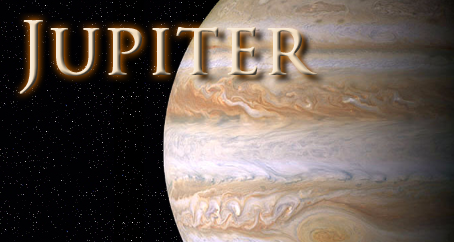Ganymede, a moon of Jupiter

Ganymede is the largest moon in the Solar System. It is 5,270 kilometres wide. It is over twice the size of Pluto, 500 kilometres wider than Mercury and about 1,500 kilometres smaller (in width) than Mars! The moon possibly has a rocky core (the part at the very centre), surrounded by a water or icy mantle, and then a crust (surface) of rock and ice. Ganymede may also have a very thin atmosphere of oxygen caused by Jupiter's strong magnetic field going under its surface and releasing water particles. This is what gives a planet or moon an ozone. Earth has an ozone mainly because it has so much water on its surface.
Ganymede appears to have two different surfaces. One side seems extremely old, covered in craters like we see on the Moon, Mercury and Mars. The other side appears younger, with less craters and more ridges, suggesting movement of the crust. This could be linked in with the fact that the moon has a watery/icy centre, which could form part of the surface similar to how Europa's entire surface may have also been formed.
